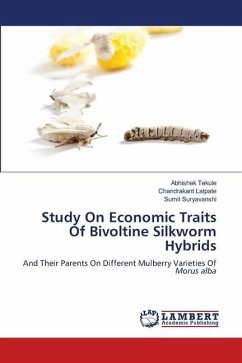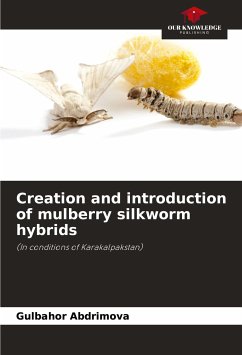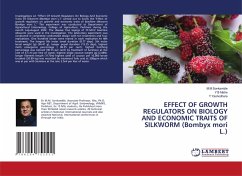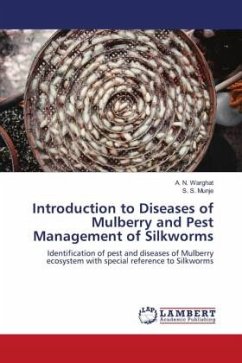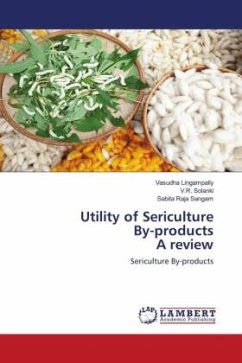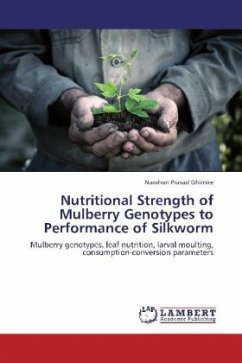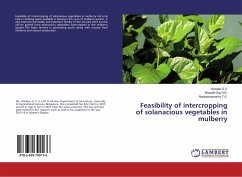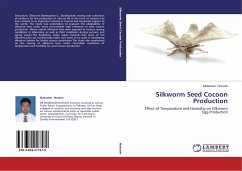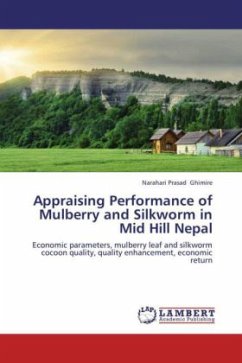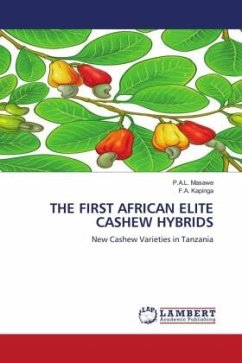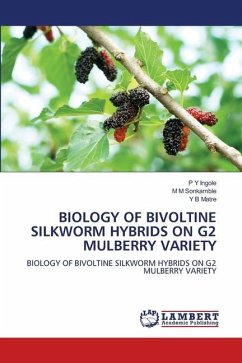
BIOLOGY OF BIVOLTINE SILKWORM HYBRIDS ON G2 MULBERRY VARIETY
BIOLOGY OF BIVOLTINE SILKWORM HYBRIDS ON G2 MULBERRY VARIETY
Versandkostenfrei!
Versandfertig in 6-10 Tagen
40,99 €
inkl. MwSt.

PAYBACK Punkte
20 °P sammeln!
The experiment was conducted at Sericulture Research Unit, VNMKV, Parbhani, during 2021, in randomized block design with eight treatments and three replications. The bivoltine silkworm hybrids viz., (CSR2 x CSR4) x (G3 x G2), (SHP5) x (CSR46 x CSR47), (G3 x G2) x (SHP5), (G3 X G2) x (SHR1), (CSR16 x CSR17) x (DHP5), (S8 x CSR16) x (CSR2x CSR4), (CSR46 x CSR47) x (S8 x CSR16) and (S8 x CSR16) x (CSR50 x CSR51) were utilized as treatments and the mulberry variety G-2 was used for feeding the different hybrids as above. Among the different hybrids reared, the bivoltine hybrid (CSR16 x CSR17) x DH...
The experiment was conducted at Sericulture Research Unit, VNMKV, Parbhani, during 2021, in randomized block design with eight treatments and three replications. The bivoltine silkworm hybrids viz., (CSR2 x CSR4) x (G3 x G2), (SHP5) x (CSR46 x CSR47), (G3 x G2) x (SHP5), (G3 X G2) x (SHR1), (CSR16 x CSR17) x (DHP5), (S8 x CSR16) x (CSR2x CSR4), (CSR46 x CSR47) x (S8 x CSR16) and (S8 x CSR16) x (CSR50 x CSR51) were utilized as treatments and the mulberry variety G-2 was used for feeding the different hybrids as above. Among the different hybrids reared, the bivoltine hybrid (CSR16 x CSR17) x DHP5 performed better for economic characters viz., weight of larvae (41.43g), larval duration (24.25 days), cocoon weight (1.92g), shell weight (0.403g), shell ratio (21.09%), filament length (1140m), filament weight (0.322g), cocoon yield (18.18kg) and effective rate of rearing (93.70%) and the moth emergence over rest of treatments.



